Nugs Bunny
Hero Member
Have you ever wanted to metal detect that historical battlefield that is off limits?
What if I told you people legally detected the site of the Battle of the Little Bighorn... even around the markers located where soldiers were killed in battle?
Here is how...
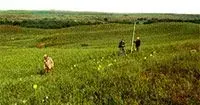
Pin flags marking where artifacts were found. The figures are assisting in plotting and recording the artifacts. This location was later determined to be an Indian position.
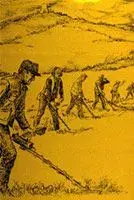
A sketch of volunteers using metal detectors on the battlefield.
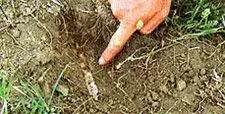
An iron arrowhead, one of only 10, found during the field investigations.
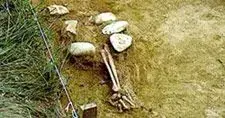
Bones of a human forearm and hand overlooked by the 1881 reburial party, and discovered during the excavations.
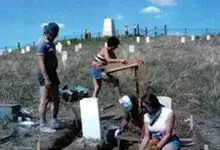
Excavations were undertaken at several markers to determine if they were accurately placed.
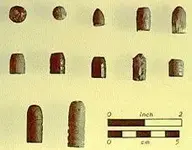
A sample of the many bullet types found at the Little Bighorn.
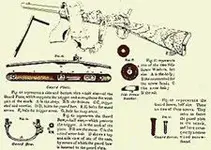
Springfield rifle parts found at the Reno-Benteen Dump excavations. These parts are probably from Scout and Packer guns damaged during the fight. They are not from the soldiers' combines.
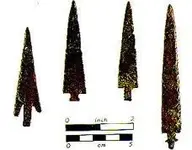
Iron arrowheads, some were commercially made, and others were hand-made.
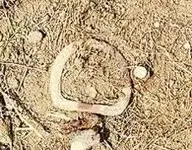
A soldier's saddle D-ring as found in the field.
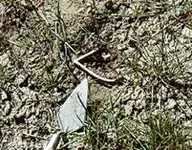
A back-strap to a Colt Model 1873 army revolver as found in the field.
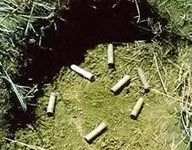
A group of soldiers' cartridge cases as they were found at the Reno-Benteen defense site.
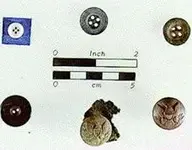
Some of the soldiers' clothing buttons found in the marker excavations.
What if I told you people legally detected the site of the Battle of the Little Bighorn... even around the markers located where soldiers were killed in battle?
Here is how...
Archeology at The Battle of the Little Bighorn
The archeological work consisted of three parts. The first was a metal detector inventory of the battlefield. Volunteers, experts in the use of detectors, walked about 5 meters apart covering the field. When their detectors `beeped', they marked the area with a pinflag. Behind them came the recovery crew. These people would excavate cautiously, searching for the object that caused the detector to signal. When found, the object was carefully left in place. Finally, the survey crews came along.
Using either a transit or theodolite, these crews would set up on a predetermined datum point and determine the angle and distance of the surrounding artifacts from that point. This crew would make notes on the depth of the artifact below ground surface, and in the case of bullets and cartridges, also note the orientation and the declination of the piece. Only then was the artifact collected.
NPS Archeology Program: Research in the Parks
Arguably, the most important archeological metal detecting took place in 1984, at Little Bighorn Battlefield in eastern Montana. This is the site of a battle that took place between the US Army and Lakota, Arapaho, and Cheyenne forces in 1876. During this survey Scott and Fox showed the effectiveness of working with metal detectors and metal detecting hobbyists to obtain information about battlefields

Pin flags marking where artifacts were found. The figures are assisting in plotting and recording the artifacts. This location was later determined to be an Indian position.

A sketch of volunteers using metal detectors on the battlefield.

An iron arrowhead, one of only 10, found during the field investigations.

Bones of a human forearm and hand overlooked by the 1881 reburial party, and discovered during the excavations.

Excavations were undertaken at several markers to determine if they were accurately placed.

A sample of the many bullet types found at the Little Bighorn.

Springfield rifle parts found at the Reno-Benteen Dump excavations. These parts are probably from Scout and Packer guns damaged during the fight. They are not from the soldiers' combines.

Iron arrowheads, some were commercially made, and others were hand-made.

A soldier's saddle D-ring as found in the field.

A back-strap to a Colt Model 1873 army revolver as found in the field.

A group of soldiers' cartridge cases as they were found at the Reno-Benteen defense site.

Some of the soldiers' clothing buttons found in the marker excavations.


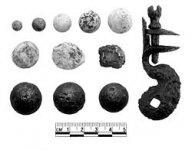
 Because I could easily have flagged 100 such signals, of which 99% were going to be modern cr*p.
Because I could easily have flagged 100 such signals, of which 99% were going to be modern cr*p.

